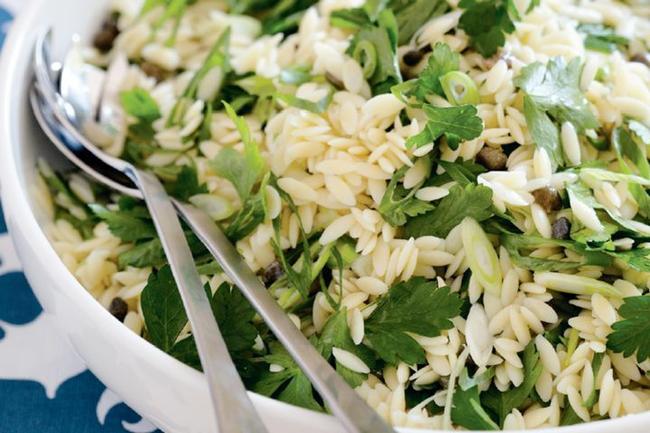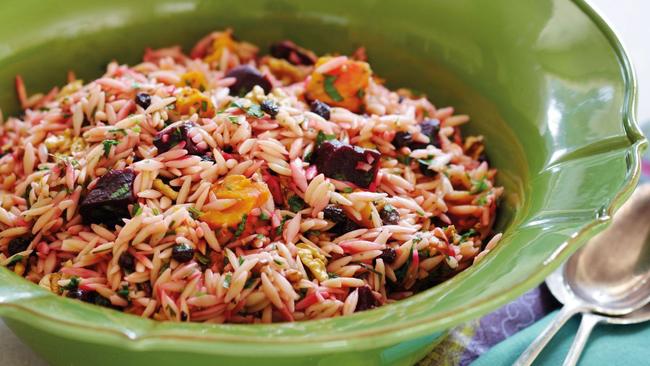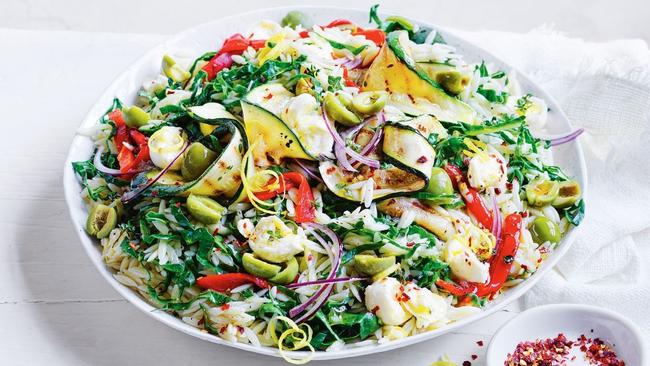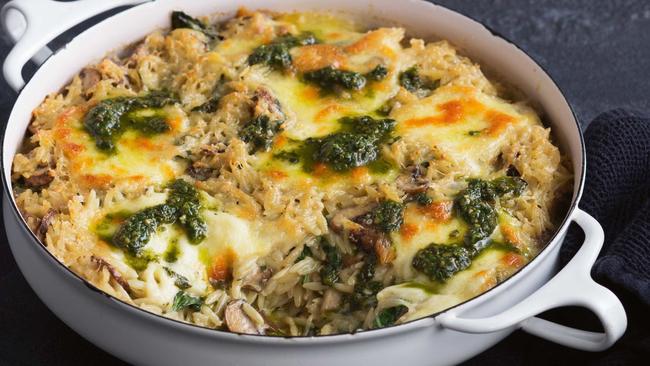How to cook orzo
How I turn this underrated pasta into a firm favourite

During the height of the pandemic, orzo was often one of the only ingredients left on shelves in the pasta aisle – overlooked in favour of its more popular siblings (we’re looking at you, penne). But, I’m about to share some wisdom I gained from an Italian home cook that’s made orzo one of my favourite ingredients to cook with regularly. Not only is it a great filler to stretch a meal that little bit further, but it’s a versatile ingredient to have on hand.
Orzo vs risoni: what’s the difference?
You’ve probably already picked up on it, but despite its looks, orzo is NOT rice. It’s made just like pasta, traditionally using semolina flour, and then cut into a rice-like shape.
But isn’t that exactly how risoni is made?
Yes! We have ourselves a tom-ay-to tom-ah-to situation here. Orzo and risoni are the same type of pasta. In Italy ‘risoni’ is the more common term, which is often used in Australia too, but the rest of the world tends to refer to it as ‘orzo’. Take your pick!

Learning to cook orzo like an Italian
At the risk of bragging, I learnt to cook during an exchange to Italy when I was in school. For 6 months, I was surrounded by the tastiest traditional Italian food – so it’s no wonder the cuisine continues to have such a huge impact on my cooking habits.
Before this life-and-taste-bud-changing experience, my only knowledge of Italian pasta was spaghetti bolognese (which I was definitely pronouncing wrong, but that’s an article for another day).
So, when my host mum and I sat down together to prepare a delicious Italian dinner one night, I was a little surprised to see something that looked like rice in front of me.
Since coming home, I’ve realised that I’m not the only Aussie confused about this deceptive pasta. Once I’ve let you in on some traditional Italian cooking secrets though, orzo is going to become the pasta that you turn to time and time again. See you later, spaghetti!
What can you substitute for orzo?
If you don’t have any orzo on hand, or if your diet is gluten free, cauliflower rice (which is just grated cauliflower) is a great alternative to use because it has the same chewy texture as cooked orzo. Arborio rice is another gluten-free substitute that works well!
If you’re looking for a pasta substitute, why not try ditalini? This is a small tubular pasta that will taste just like orzo. It does cook faster than regular orzo so make sure to keep an eye on it to avoid over-cooking.
Cooking orzo: how to get the perfect texture
Cooking orzo is fairly simple, but there are a couple of techniques my host mum used to get the velvety texture just right – and don’t worry, Italians use orzo from the supermarket too!
Depending on what recipe you’re cooking, there are a few different ways to cook orzo.
If you’re adding it to a soup or stew, for example, you can simply add it to the liquid in the saucepan for 8-10 minutes before the dish has finished cooking. This minestrone verde with frico is a classic Italian recipe that I turn to everytime I’m sick and need a pick-me-up.

Should I cook orzo in a pot or pan?
It’s incredible how versatile this pasta is. It can be used in everything from salads to soups, to decadent pasta sauces.
If you’re cooking your orzo to add to a salad (like this smoked salmon and pea risoni with coriander mojo), or add to a pasta sauce (ciao, meatballs with risoni!), making it in a pot will do the trick.
Simply bring a large pot of salted water to a rolling boil, add your orzo and wait 8-10 minutes before straining the pasta and rinsing it in cold water to stop the cooking process. Then, add the orzo back into your other ingredients and enjoy!
To make orzo the true star of the show, like my go-to spring risoni-stuffed capsicums, my host mum taught me how to bring a new depth of flavour to orzo. For this method you’ll definitely need a skillet.

Here’s how to cook perfect orzo every time:
The only time orzo is anything like rice is when it comes to the 2:1 ratio of orzo to water for cooking. Keep that ratio in mind if you’re wanting to make a larger batch.
What you’ll need:
- 2 tsp butter
- 2 cups water or broth of your choice (the broth is optional, but I think vegie stock works best)
- 1 cup orzo (risoni)
- Over low-medium heat, melt better.
- Once melted, add orzo and stir continuously for about 4 minutes to coat the pasta, or until it turns a light golden brown colour.
- Whisk in water/broth and bring to a soft boil.
- Reduce heat to low, cover with a lid and simmer for 15 minutes or until liquid has been absorbed.
Et voila! Or, as they say in Italy: ecco qui!
What do I make with orzo?
Okay, you’ve mastered cooking orzo, now you can fill your recipe repertoire with as many orzo recipes as your heart desires. Here are some ideas:
The best orzo salads
Orzo transforms any regular salad into a meal you can enjoy all year round. Some of my favourites are ones that celebrate traditional Italian flavours, like this antipasto, bocconcini and risoni salad.
It’s not just Italians who love orzo though. It’s now incredibly popular in Greece and Spain. This chorizo, calamari and risoni salad is influenced by Spanish cuisine and these Greek meatballs with risoni salad are a must-try!

What’s the easiest thing to cook with orzo?
You can’t go wrong with a tray bake. For an easy one-pan orzo dinner, try this creamy chicken, mushroom and risoni bake. If you’re looking for a vegetarian orzo option, this cheesy mushroom and pesto risoni bake is a favourite in my household!

Originally published as How to cook orzo


